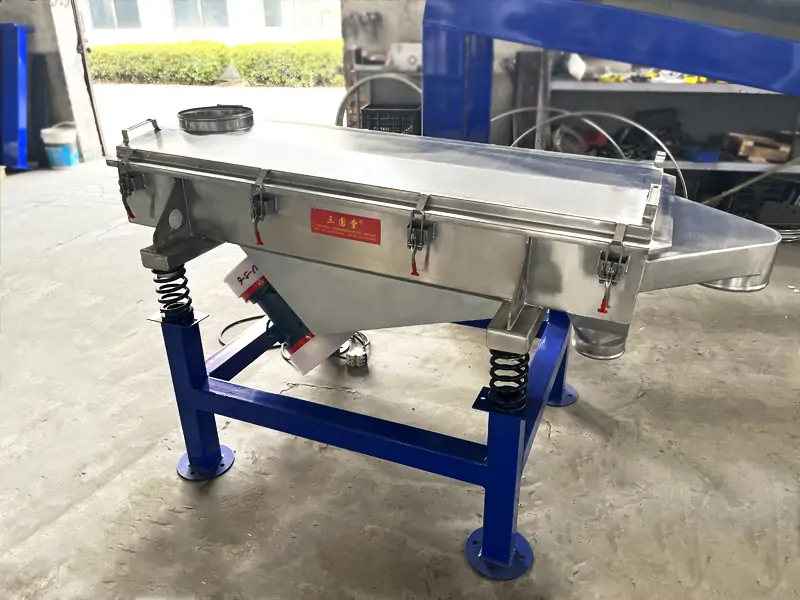When the vibration motor on the rotary vibrating screen operates within the normal ambient temperature range (-20℃ to 40℃), its temperature should not exceed 65℃. However, during long-term use, dust can accumulate on the surface of the motor, affecting heat dissipation, causing excessive temperatures, and even burning the motor. So, how can you cool down the vibration motor?
Ensure a Well-Ventilated On-Site Environment
It is crucial to ensure that the on-site environment of the rotary vibrating screen is well-ventilated. You can install ventilation and exhaust devices on-site, and try to place the screen machine in a location with good ventilation. In summer, you can install an electric fan near the rotary vibrating screen to help maintain a lower temperature for the vibration motor.
Regularly Clean Dust from the Surface of the Vibration Motor
Develop the habit of regularly cleaning the dust on the surface of the vibration motor, or clean the vibration motor along with cleaning the screen. This ensures that the dust density in the working environment of the vibration motor remains low to avoid the impact of dust accumulation on heat dissipation.
Use Thin Oil for Lubrication
The clearance between the vibration motor and the bearing is a sliding fit. As the bearing temperature increases during use, the viscosity of the grease gradually decreases. The high-speed rotation of the vibration motor spindle causes the internal grease to leak continuously, resulting in a lack of lubrication and potential damage to the bearing. Using thin oil lubrication can improve the lubrication effect. Through the circulation of lubricating oil, the bearing is fully lubricated, thereby reducing the temperature. It is recommended that the grease in the vibration motor be replaced every 3,000 to 5,000 hours of operation.
Maintain Stable Voltage and Current
During the use of the rotary vibrating screen, ensure the stability of the voltage and current. Excessive voltage can endanger the insulation of the motor and put it at risk of breakdown; too low a voltage will decrease the torque, causing the motor to overload and overheat. Long-term overload will affect the life of the vibration motor. Therefore, the variation in the power supply voltage of the vibration motor should not exceed ±5% of the rated value, and the difference between the three-phase power supply voltages should not exceed ±5% of the rated value to ensure that the motor output power remains at the rated value.
By implementing these measures, the vibration motor on the rotary vibrating screen can be effectively cooled, its service life can be extended, and the stable operation of the equipment can be ensured.





















